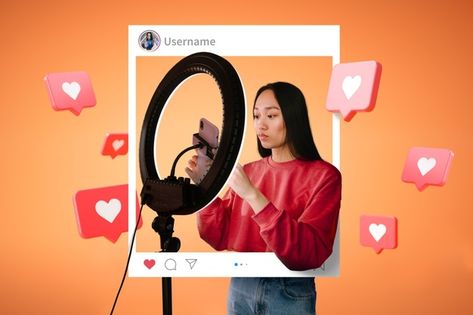Which Social Media Platform is Best for Your Business?
No doubt that every company should enter the world of social media.These days, it is increasingly crucial to be present on various platforms to improve visibility and stay relevant within your target audience. For businesses, networks are other ways to increase brand visibility and improve customer service. These platforms are where people share information, build interpersonal relationships and engage in meaningful conversations. For businesses, networks are other ways to increase brand visibility, participate in these conversations and improve customer service.
Social media presence is one of the most popular online activities, with figures to be around 4.26 billion users in 2021 and an estimated increase of 2 billion by 2027. The main social networks are Facebook, Twitter, Instagram, LinkedIn and Pinterest. Therefore, you would pass up great brand exposure opportunities if you don’t join the social media trend.
In recent years many social networks have been introduced to the market, which challenges the choice. There are different platforms for different goals and audiences. While it is possible to be present at all of them, it’s not recommended. You will have to focus on the platforms that will bring the right target audience to your business and, at the same time, meet your marketing objectives.
Before choosing a platform, you will need to consider three crucial points. We will now focus on the significant aspects to help you decide which platform is best for your business.
Table of Contents:
1. What are your marketing goals?
It is hard to decide which platform to go after without having your marketing objectives defined first. Each platform brings its own features and distinct efficiency to achieve results. In addition, it is essential to define your goals in advance so you can measure the results and success of your campaigns. Let’s talk about the 5 most common social media marketing objectives:
- Increase brand visibility: one of the main reasons why marketers use networks is to get consumer attention and expose your company to new people. With 4.26 billion active users worldwide spending an average of 144 minutes daily, you’ll have a great chance of reaching potential customers and delivering your message.
- Increase engagement with your audience: to improve brand awareness, loyalty and word-of-mouth recommendation, you should focus on increasing brand engagement or engagement with your audience. In addition, platform algorithms prioritise posts with the highest engagement prospects.
- Driving traffic to your website: A step further is to direct these exposures to visitors to your website or blog, who can turn into your customers. Marketers use the networks to distribute content and drive traffic to their websites.
- Lead generation: Companies with a long sales process usually use lead generation techniques, such as a form to get email addresses, as their key marketing objective. In this way, they gather new potential customers.
- Conversion: you can use platforms to turn your audience directly into paying customers. A popular strategy is to use advertising within the networks to increase sales.
2. How do you know what channels your target audience uses?
The core social media marketing strategy is the choice of channel to reach your target audience and maintain the current relationship with customers. Therefore, using a platform where your target audience is not present would not be efficient.
Before trying to figure out which platforms will give you the best chance of reaching your target audience, the first thing to do is clarify who those people are. Create buyer personas for your customers and get information on their age, gender, income, etc.
With that information, you can align those insights with social media demographics and see which network fits best. That sort of insight can be found on sites like the Pew Research Center for Internet and Technology. Arguably, this is one platform that runs ongoing research on demographic data from different platforms, being a big help when determining where your audience is most likely to spend time online. Once you’ve defined your personas and if you want to know how to size your social media presence, some platforms like Facebook will provide you with an estimation of how many people you can reach.

Then the next thing you need to look at is the type of content you will create. Different platforms work best with different types of content. While Instagram is a superb source for sharing photos, YouTube is the number one video platform for sharing tutorials and video content in lengthier formats.
In addition to video and image content, there are a plethora of other types of content you can create to engage your target audience as blog posts, podcasts, UGC or user-generated content (follower-generated content), webinars, e-books, etc.
Before diving into content creation, you should decide what best suits your type of business and is most likely to interest your target audience. If you want to learn more about the importance of content marketing, read our article “What is content marketing? 7 benefits.”
4. And finally, which platform is best for your business?
Now that you have defined your marketing objective and understand which platform is for your target audience and the content you should create, you can identify which platform brings all three points together. Joining these three points together will give you insight into which platform is best for your brand. We present the various types of social networks and the main characteristic of their users.
You were probably by now expecting Mark Zuckerberg’s platform to grab the top position. With over 2 billion active monthly users, Facebook is the largest social network with a great advertising platform which can be customised to reach very targeted audiences. Whether your business goal is brand awareness, boosting engagement, increasing website traffic, lead generation or conversion, Facebook is the place to achieve your goals when used correctly.
Remember that this is where users want to see a different angle of the business beyond the website, like a ‘behind-the-scenes presentation of the brand. That helps you gain credibility and shows that you care and want to connect with your customer. So use content that best represents your business, considering the tone of voice, formats and visuals. Among the types of content: photos, contests, questions, and videos work exceptionally well on Facebook.
With 330 million monthly users, Twitter is the second most popular platform in the world. It is used mainly by users between 35-65 years old, who publish and interact with short messages, known as ‘tweets’. Compared to other networks, Twitter was created to share breaking news, articles, quotes and information about technology, news, sports, marketing, journalism, and many others.
However, each message is limited to 280 characters, meaning you’ll need to be interesting, informative and factual in a single tweet. If you do a good job, users will retweet your message. That retweet will be able to reach more people, which makes this platform very important to increase brand visibility.
Instagram is a purely visual platform. In this social network, you should invest in publications that include photos and videos. With a monthly active user base of over 1 billion, most of them under 40 years old, Instagram cannot be ignored, mainly because it offers high prospects for increased visibility, engagement and conversion.
Instagram has all the same paid benefits as Facebook, but Instagram also has its own set of organic perks. That makes the platform a superb option for businesses with and without an advertising budget.
The content type that works best on Instagram is beautiful photography, stunning graphic designs and unique designs with a small amount of text. A cohesive theme for your content will help your brand stand out on Instagram. Plus, it also integrates with your Facebook and Twitter accounts, which allows you to share the same content across multiple platforms.
LinkedIn is the B2B recruitment and marketing platform of choice. The platform allows you to contact and share content with other professionals, including colleagues, potential employers and business partners. Paying attention to the advertising audience profile, 25-34-year-olds are the predominant demographic group, accounting for 60% of the platform’s total users.
You can showcase expertise in your field and build authority for your brand by writing editorial content. With the opportunity for direct message advertising, LinkedIn proves to be an appreciable platform for lead generation.
When you think of Pinterest, the first thing that probably comes to mind is inspirational images and lots of DIY (do it yourself) posts. It’s the perfect social network to find ideas like recipes, home styles, fashion inspiration, event decor inspiration and more. When you find Pins you like, you’ll save them on boards, so you can keep your ideas organised and easy to find.
There are 360 million people who use Pinterest monthly, and 40% of these people are between the ages of 25 and 35. Pinterest users mostly don’t mind the adverts, and 83% of users make purchases based on branded content. Hence, it is the perfect option to increase your online conversion.
Social media is a powerful tool for any business to increase its online presence and customer engagement. These platforms provide crucial information that can help your brand reach a diverse group of people across the globe and understand how to engage with them.
The Link37 team will help you discover the best targeted digital marketing strategy for social media that will fit best with your business, content type and target audience. Contact us to find out more!
LAST UPDATE ON APRIL 2024



